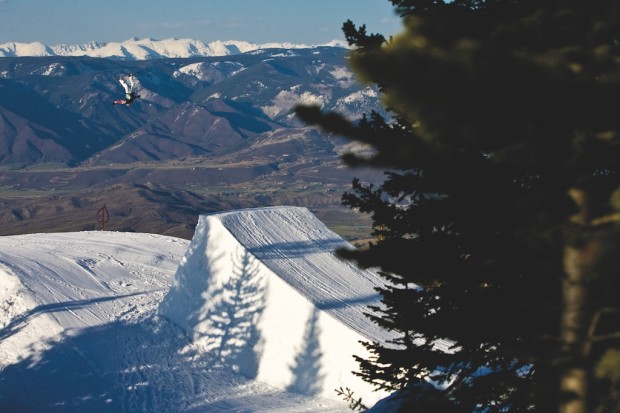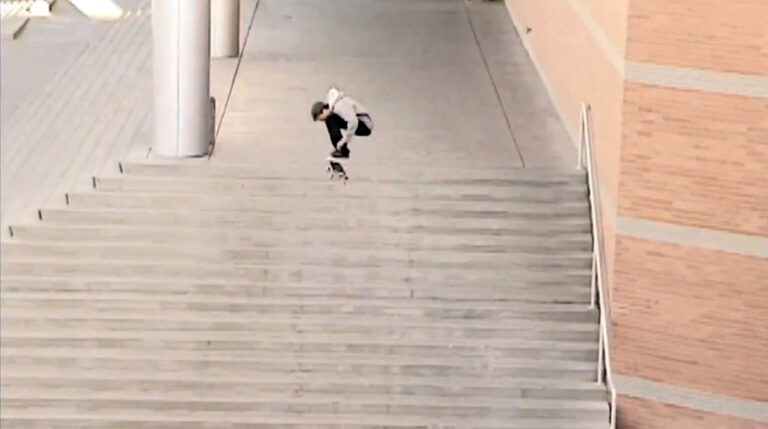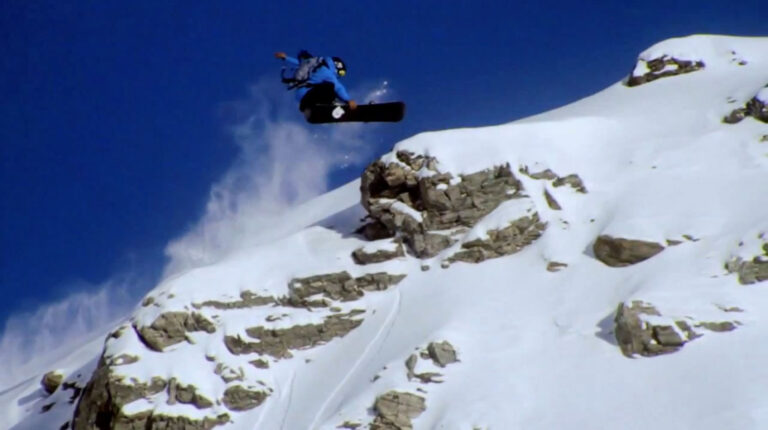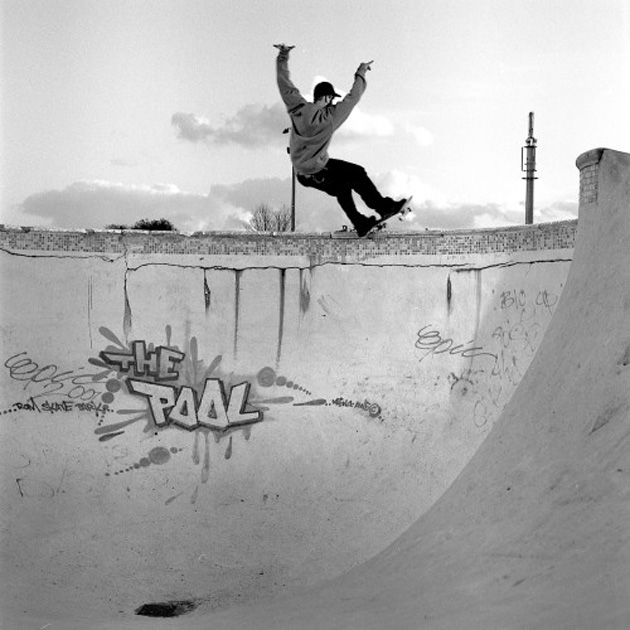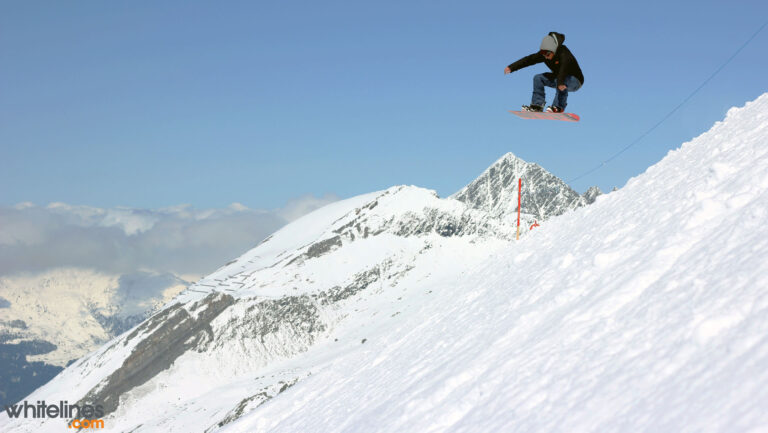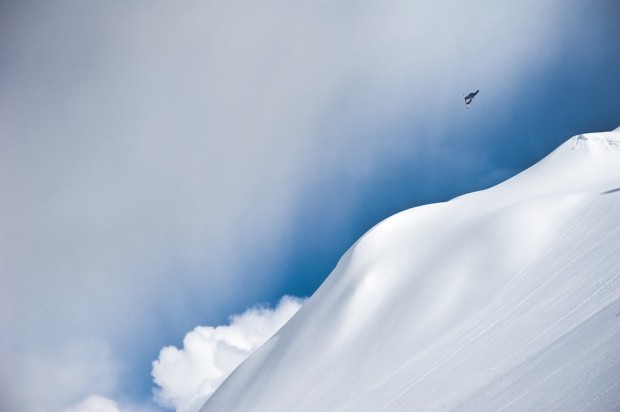
Behind-the-scenes with Travis Rice
That’s it, that’s all? Think again. Travis Rice is back with a new budget-busting movie. Colin Wiseman joined him on set to find out what really makes this force of nature tick.
It’s late in the evening at Travis Rice’s three-story ranch house outside Jackson Hole, Wyoming, and Rice is planning for the morning. John Jackson is teaching photographer Danny Zapalac how to play a djembe drum while Rice talks on the phone. He turns to me: “I’ve got you a sled for tomorrow – my old machine from two years ago – but there’s one catch: if you wreck it, you pay for it.”
Being a relative rookie when it comes to snow machines in the backcountry, I shoot him an apprehensive look.
“You’ll regret it if you don’t come,” adds Rice. “Just don’t f*cking blow it.”
He’s right. Jackson is in the midst of a mid-winter storm cycle and the Brain Farm crew has their favorite backcountry zone dialled in, with pillows, cliffs and a handful of two-story booters ready to go. Mark Landvik is staying up in town and ready to meet us in the morning.
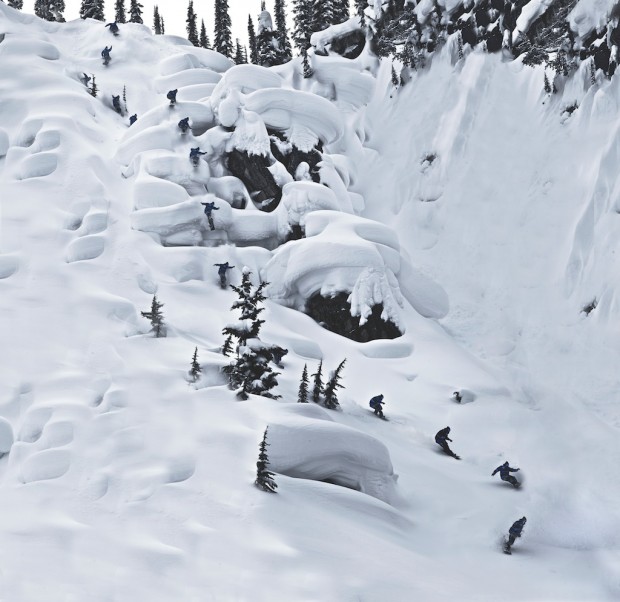
It has been a difficult start to the season for the film team. An ankle injury put Travis on the couch for a couple weeks early on, John Jackson is nursing a knee injury, and Scotty Lago broke his jaw filming just prior to my arrival – but it’s still January and conditions are setting up well for a string of productive days.
We eat dinner with his girlfriend, Evan. She’s a natural beauty – not the bleached-blond trophy kind of girl, but rather a petite, healthy brunette, just back from California. Conversation meanders beyond the pop culture void and into more metaphysical grounds. Rice intermittently drifts in and out of the dialogue and the half-dozen others going on via his iPhone, planning for the weeks ahead. He has recently returned from an Asymbol art show in New York and will be hosting the Transworld awards in a few days at the annual SIA tradeshow in Denver. Meanwhile, he’s trying to organize and film Brain Farm’s next movie, The Art of Flight. “Sometimes I think Travis is a little too accommodating,” says Evan. “He has a hard time saying no.”
Rice starts showing me pictures from an autumn trip to the Bahamas with his dad – a decidedly quiet escape. There he is with a giant emerald green dorado fish. Now he’s catching waves on a Stand-Up Paddle board in blue speedos. Given his larger-than-life persona, it’s funny that we know so little about the 28-year-old Rice as a person – his appearances in the public eye are often limited to extreme exploits with Brain Farm and Absinthe Films, or a web clip of snowmobile races in his backyard at Christmas. The fact is, behind the intensely focused athlete and Toyota Tundra-driving Jacksonite is a dude who can’t be pigeon-holed by his celluloid façade of cartoonishly huge airs and sledneck antics.
I got certain mountain senses as a kid. I could actually go on bomb routes and watch Pops chuck some charges
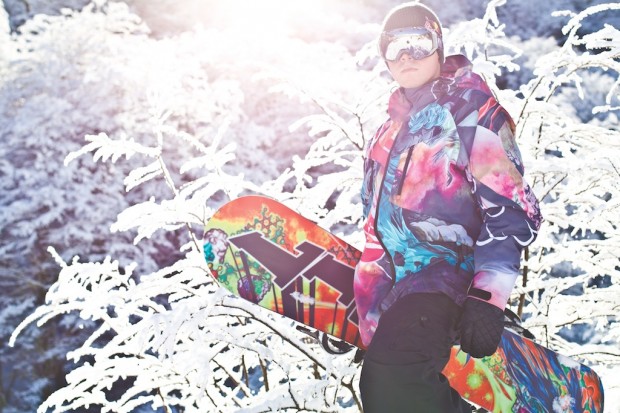
Rice was born in 1982 in Jackson Hole, Wyoming, at a time when it was more of a wild west ski town than an international mega-resort. “My father was a ski patroller when I was growing up,” he remembers, “so I spent a lot of time on the mountain; hanging out in patrol shacks, looking at Playboy mags, generally getting to see how they control the mountain. From the ski patroller’s point of view, it’s all about opening up the mountain safely; I didn’t think much of it then, but I look back and realize that I got certain mountain senses as a kid. I could actually go on bomb routes and watch Pops chuck some charges.”
That early exposure to big mountain safety on one of the biggest mountains in the US came on skis. When he started racing, though, the lure of the extensive, rock-riddled terrain of the Hole sent the youngster on a different course. “I remember going to races and it being a pow day,” Rice says, “and you have to friggin’ spend all day slipping out the pow so you can get back to the bedrock – making it icy. I kind of figured out early that racing gates was a little too narrow-sighted. Plus here in Jackson, hitting jumps and riding pow was the most fun.”
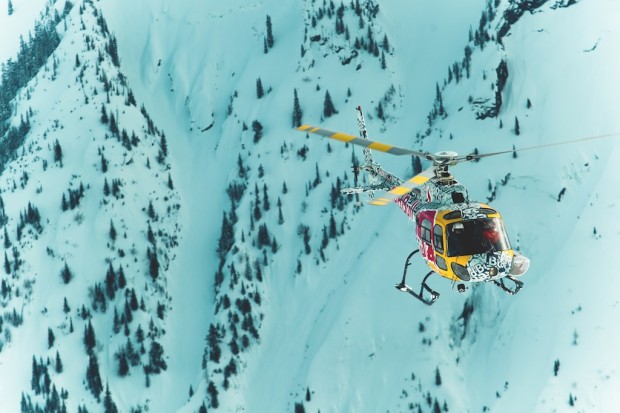
So, at age 12, Rice dropped in upon a single plank and never looked back. “My best memories from when I was a kid are just sending cliffs and pillows into powder,” he says. “Jackson is a big mountain – it’s very raw and unrefined – so there are a lot of technical aspects. When I was in high school we would just kind of hike out and build random jumps all over the place.”
I really love the idea of freestyle contests, but the organisers should tell the resorts to f*ck off until you allow us to close this venue for a minimum of a week in advance
While Rice was developing his backcountry riding from an early age, he was also rounding out his skills and gaining exposure to the larger snowboard scene through travelling with the Jackson Hole snowboard team, where he competed in everything from pipe and slopestyle to boardercross ¬– “back when it was just a bunch of freestylers, not 250 pound Euro-dudes on race boards.”
Yet Rice never achieved super-grom status like many of his current counterparts and remained largely under the radar until he was 18. Then it all changed with one hit. In 2001, Travis made the 13-hour drive to Mammoth Mountain in California to ride at Snowboarder Magazine’s Superpark. It was the era of bigger-is-better, and the crew at Mammoth had built a behemoth 110-foot gap. Rice strapped his balls on and sent a back rodeo to bolts that put him squarely in the public eye. He signed on with Absinthe Films immediately and landed the opener in 2001’s Transcendence with a powerful, confident style that brought technical tricks to bigger features. This kicked off a decade-long relationship that produced many monumental moments in snowboarding ¬– none more so than his opening/closing section in Absinthe’s 2006 release, Pop, featuring he and Romain de Marchi charging the 120-foot ‘Chad’s Gap’ in the Utah backcountry, and, perhaps even more impressive, a perfect double cork over the slightly smaller ‘Pyramid Gap’.
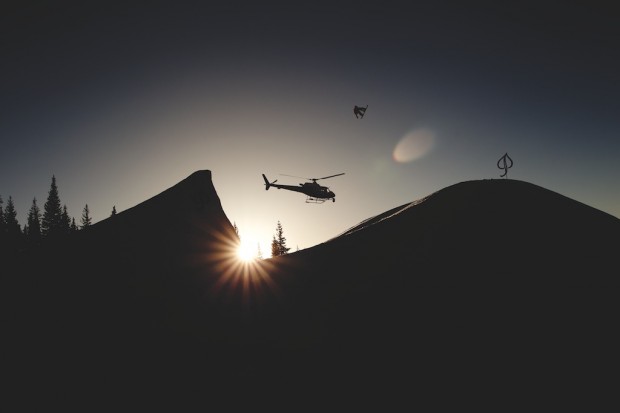
Meanwhile, Travis was paying his dues on the contest circuit, winning everything from rail contests (like the 2002 US Open jam) to slopestyle (including the US Open and X Games double in ’03) to the quarterpipe event at the ’04 Arctic Challenge. He even topped a FIS World Cup halfpipe contest. But this was all a stepping stone ¬– a half-decade spent deep in the snowboard industry and atop most major podiums. It was time to shake things up.
Enter Curt Morgan.
A former professional snowboarder, Curt and Rice met in the early 2000s, but Curt’s riding career was cut short due to injuries. “I had met Travis at the US Open, right when I switched to Rossignol,” says Morgan. “Then I broke my back three times… and that sucked. But I had always been into photography, I was going to film school at a place in Maine called The Workshop, and I learned a lot there.”
Morgan worked on Grenade’s early movies before burning out and moving back to his home state of New York to recuperate. “I think he would’ve gone crazy or something bad would’ve happened if he had stayed on with those guys,” Travis says now, cryptically. Then, in 2003, Rice hired Morgan to work on The Community Project. Rice was funding it out of his own pocket, and he set Morgan up with a modest salary for the close to three years it took to complete the movie, which was edited at Rice’s house. “We didn’t have any sponsors, and we did quite a bit of it on our own, then Oakley came in towards the end and Rice got reimbursed,” says Morgan. “Then he came out of pocket on That’s It, That’s All too. I had sweat equity in it, but he also got reimbursed for that after Red Bull and Quiksilver came in.”
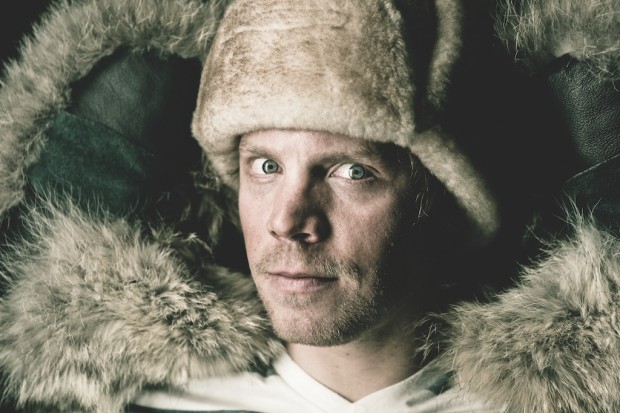
By then, Travis Rice and Curt Morgan were bona-fide business partners, having launched Brain Farm Digital Cinema, and by the time 2009’s That’s It, That’s All blew the doors off the world of snowboard filmmaking, Brain Farm was a sought-after production company whose work featured everywhere from national TV ads for Subaru and Visa to Hollywood releases like 2010’s Jackass 3D. “Our roots are in action sports,” says Morgan, “and that’s all we would do if it was financially viable, but in order to grow we have to take on a lot of work – a lot of people see the work we do and want us to apply it to more corporate stuff.”
Back in Jackson, we make early morning preparations to head into Travis’s favorite local backcountry zone in the Snake River range, a place he has been riding since his teens. Rice loads four snowmobiles into the back of his trailer while coordinating with Morgan and the dozen or so Brain Farm crew members who will be joining us in the field. His truck and trailer combo is an imposing sight rolling through the iced-out Jackson morning, measuring in at over forty feet all told, and sporting murals for both the non-profit organisation Protect Our Winters and the Asymbol Gallery, which he runs in conjunction with iconic artist Mike Parillo. All the while, Rice conducts business with dealers in New York who have already started the east coast work day.
“Asymbol came about through what I saw as a bit of a gap between creators and appreciators,” Rice explains. “I have a lot of good friends who I’ve been lucky enough to know in the art and photography world, and a lot of these guys are sitting on an incredible life’s work and have stories to tell. It really shows the story of our culture – snowboarding culture – and the alternative lifestyles that surfing, skating and snowboarding bring. It’s basically a platform to help support their creativity and their work. We’ve got a couple great non-profits that we work with as well, like POW and the Action Sports Environmental Coalition, so Asymbol’s set up to help us all give back.”
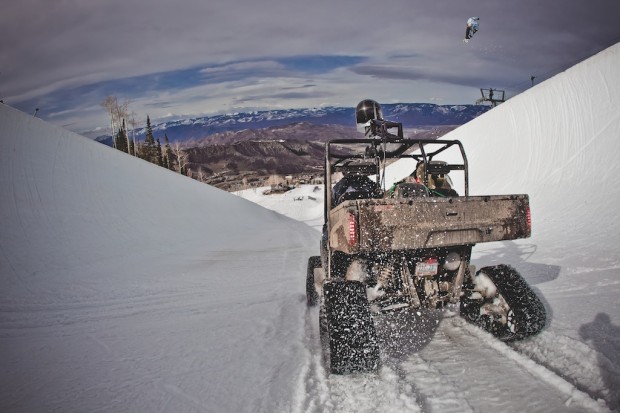
It’s another example of Rice’s forward-thinking mentality when it comes to snowboarding as both a culture and a business – not only does he make a living as a rider, but, as with Brain Farm, he has found a unique way to bring action sports to a more mainstream audience without diluting the essence. “I don’t know how the rest of the snowboard community really sees Rice,” Parillo later tells me. “I had someone say they thought he was a jock and that’s the furthest thing from the truth. Obviously, you’ve got to be a really good person to be at the top of your game like that and not let it go to your head. He’s almost a little too generous ¬– he doesn’t put himself above anything. That lack of ego transfers into everything that he does. I think I demand a lot out of myself, but he demands a lot of me in terms of perfectionism. We have one of those rare relationships where you don’t have ego involved – as long as that stays around, it’s always going to be good.”
Greybird skies don’t slow the crew down; every day, even on a two year project, is a production day
As soon as the smell of two-stroke oil fills the air, Travis’s iPhone is off for the day – it’s time to go snowboarding. Greybird skies don’t slow the crew down; every day, even on a two year project, is a production day. Three filmers peel out carrying six-figure camera equipment. Support crew, all decked out in the same Quiksilver winter camo garb produced especially for Brain Farm, load up jib arms and various other paraphernalia and set off on the seven-mile ride to the zone. I hang back and tentatively navigate the whoops with an $8,000 liability under me, praying I don’t stick it in a tree well and slow down the whole show.
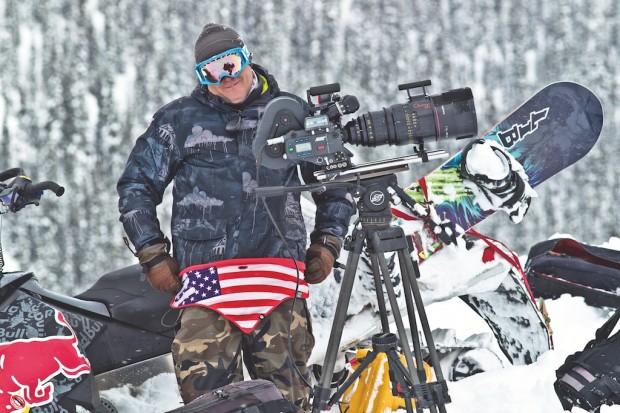
I arrive 15 minutes after the rest of the crew to find them building a small bonfire to wait out the shifty skies. Morgan directs traffic as Rice and Landvik walk through the smoke for some behind-the-scenes footage, while 20 feet of wu-tang looms just above. A few hundred yards to our left is the super-wedge where Scotty Lago recently broke his jaw – a jump that took the entire crew nine days to build, now dormant under a fresh blanket of snow. An injured John Jackson, awaiting knee surgery, shuttles the photographer for powder laps in a small bowl above. Lando is nursing a knee injury which will also end his season soon. How Rice stays healthy through all this is beyond me.
“I eat very well,” Travis explains. “My girlfriend Evan is incredible, she’s a natural chef and does ayurvedic cooking. I just try to be mindful of my body. Injury prevention is a huge thing for me with stretching, strength training, and core work pre-season. If you’re not healthy and you try to go out and work, and beat yourself up and then deal with recovery times, you just can’t do it.
“I’ve been pretty amazingly lucky throughout my career – I mean, I’ve had a lot of bumps and bruises along the way, like a slightly separated shoulder, and I ruptured my spleen when I was 18, but I got to keep it. I think spending all the time trying to do preventative medicine and stay healthy really helps. Making good decisions is also a big part of longevity, like knowing when to stop hitting a jump or knowing when to step back from a line that has heavy consequences.”
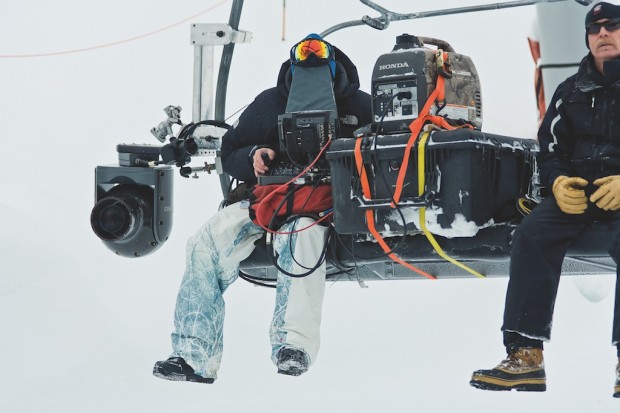
Still, it’s apparent that Rice pushes himself pretty hard. There is good snow despite the cloudy skies, so we move on to a smaller feature – a 20 foot drop with a tree limb to bonk about 10 feet out from the takeoff. Rice starts throwing backflip tappers, eventually ending the session with a frontside five right through the branch as Lando leaps over him into waist deep powder. It’s what Rice calls a “credits shot,” but he’s happy to have something in the can – conditions have been difficult up to this point. Jackson follows it up by launching his snow machine off the drop, then points it back to the jump to consider a backflip – it won’t happen that day, but he will try it the next and dismount midair, walking away inexplicably unscathed. The crew packs up and begins the slog back to Jackson for Italian food and a night’s rest.
We wanted to make Flight because of all the shortcoming of That’s It, That’s All. I mean, That’s It, That’s All was basically a trial period
We awake to cloudy skies and a much-needed down day on the last morning of my visit. It’s an opportunity to sleep in a bit, to visit the Brain Farm studios and Asymbol Gallery, and to sit down with Rice and ask a few questions.
At the Brain Farm offices, I am greeted by another cadre of editors and production managers, and a Christian music group working on a gospel album in the studio’s recording booth. There is the collection of Brain Farm equipment: a supersized ATV and a blacked-out 4 x 4, both convertible to caterpillar tracks and currently sitting dormant in the garage. Both are rigged up to accept a gyro-stabilized cineflex camera system, which was responsible for the heli-follow-cam images seen in That’s It, That’s All and big-budget productions like the BBC’s Planet Earth.
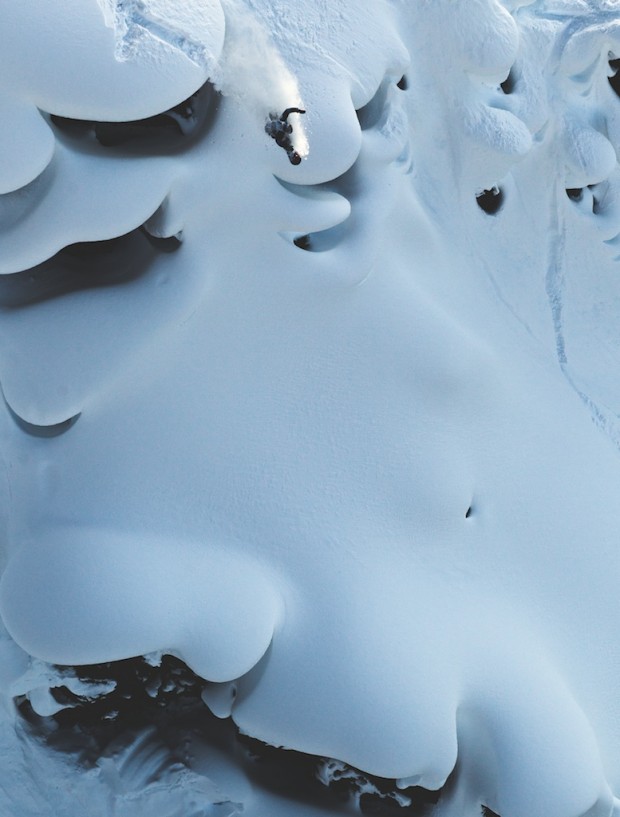
We move to the editing booth to review the shots and I am treated to a preview of various teasers for The Art of Flight, including a made-for-TV version to be pitched to major networks. Moving on to the Asymbol gallery just down the road, Rice is excited to find a fresh box of his Quiksilver designs, including his new goggles. We sit and discuss the new film.
“We wanted to make Flight because of all the shortcomings of That’s It, That’s All, he says. “I mean, That’s It, That’s All was basically a trial period of learning how to work in the backcountry within the dynamics of a bigger production. Every element you add to a backcountry shoot adds a world of logistics and slows everything down. That’s the toughest thing: trying to be on it with the riding and still take the filming to another level.”
It’s hard to imagine how they would top That’s It, That’s All – but when I speak to Morgan months later from his editing booth in Jackson, he explains the process: “It’s the same kind of action adventure documentary but this time around we had more resources, more cameras and more people to help, so we were able to document things a bit better. Plus, a lot of crazy shit happened along the way – and I hate to say it, but a lot of it was still shooting from the hip. If you roll into it with too much of a plan, what you find out is that everything you plan for pretty much goes out the window. You have a Plan A, which is what you’re hoping for, then your backup plan, Plan B, and you most likely will throw both of those out the window and have to go with Plan C, which is the unknown.
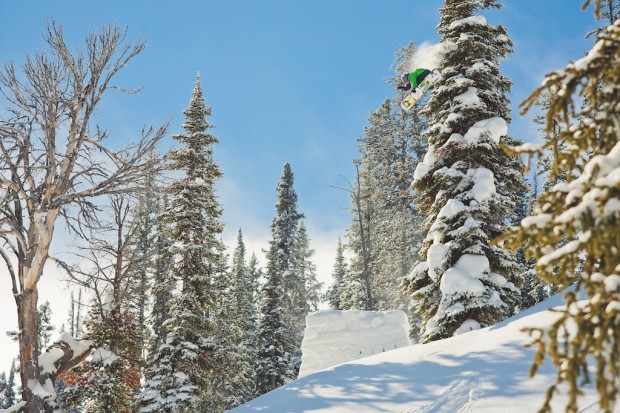
“In traditional filmmaking you can pretty much plan for what you’re gonna get,” Morgan continues. “I’m not saying we’re the only people out there doing this, but you gotta plan on it not working out according to plan; it’s a constant variable.”
When probed for an example, Morgan cites the first trip for the film to Nelson, Canada, in January 2010. “We went up there super-excited; we’d been there before, we thought we’d kill it, hit all these kickers and get super progressive right out the gate. We got up there and found out it was the worst avalanche conditions Canada had ever seen, but we were locked into a heli contract so we had to stay, even if it wasn’t that smart. We probably set off 40 avalanches in one trip, our helicopter got stuck on a ridge in fog, and we almost got stranded when ice formed on the blades.
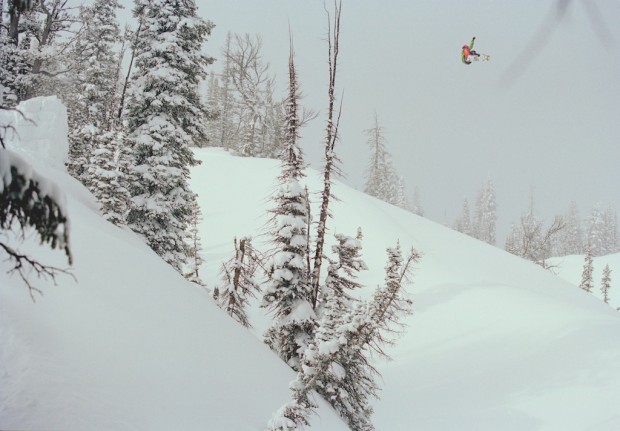
“Then we went to Patagonia and all sorts of dark, weird stuff happened; it was almost like heading out to make a comedy film, but you didn’t know it was gonna turn out to be a horror film. The movie has some really stressful moments, but overall it’s pretty uplifting… that’s the one thing that’s really different about Flight versus That’s It, That’s All: it’s got these really stressful elements, but they’re not forced. We were just there to capture them. I guess winding up in Plan C is where the story really came from.”
Having the drive of Rice on set every day inevitably helped the crew accomplish more than many would have in their position. It’s just an extension of his personality ¬– always ready to try something new, to stay active no matter what the scenario. John Jackson remembers their trip to Alaska in the spring of 2010 – the trip which provided WL92 with the first mind-blowing images from the new movie. “I was out fishing, trying to find part of the river that wasn’t frozen. I had the shotgun with me in case some grizzlies came, and I ended up seeing these game birds and shot one of them and brought it back. We ate it that night and then the next day everybody went out with their gun except Travis; they killed like eight of them and brought them back. Then Travis went out with, can you guess, a slingshot, and he got one. But that’s just a little bit of how Travis operates: He’s got a good head on his shoulders and he’s always thinking – the wheels are definitely spinning up in that head and he’s always coming up with the craziest shit. He’s always challenging himself and pushing it, and that’s what makes him good at what he does.”
With The Art of Flight now in the bag, Rice and Morgan are already looking forward to their next project. “We’re making a trilogy,” Morgan says. “Just watching what we’ve done, watching footage of Rice and Nicolas Müller changing the freeride game in Revelstoke, and Landvik too, it makes me want to get out in the field and start shooting.”
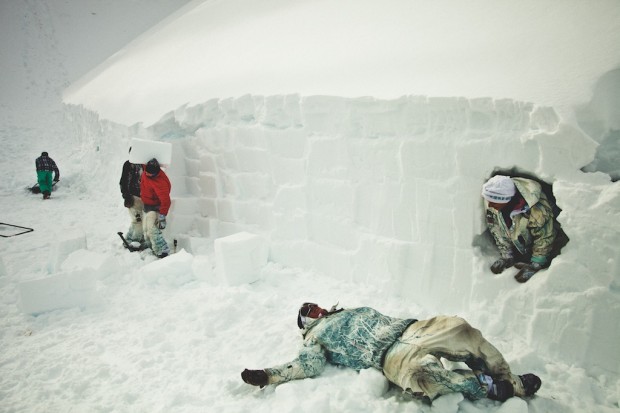
Rice, for his part, has his sights set on another project. “I’m going to do a contest up at Baldface Lodge near Nelson, BC. Jeff Pensiero [the owner and lodge manager] is letting us build the best snowboarding run in the world, with pillow lines, a hundred-foot jump, and some log jibs down low. I’ll bring the best riders in the world – freeride legends like DCP, Gigi Rüf, Nico Müller and Devun Walsh, and then the top guys from the TTR, too – and it will be about who can ride real terrain the best. A guy like Seb Toots yawns when it comes to double corking a kicker, but lining up a triple pillow pine, that’s different. The best snowboarder will win.”
A few yards to our left is the super-wedge where Scotty Lago recently broke his jaw – a jump that took the entire crew nine days to build up
With the contest, which will be called ‘Supernatural Selection’, in the works, Travis Rice is again shaping the snowboard world to his vision – a vision embedded in deep respect for the mountains and the ability to bring progressive freestyle to natural terrain.
“The other freeride contests are sweet,” says Rice, “I’ve gone to a couple [of North Face] Masters events and they’re great, but some venues won’t even close their mountain down and they let the public ski through the course the day before the event. I really love the idea and it’s a great group of people in charge, but the fact that they can’t get support from the mountains… they should tell them to fuck off until you allow us to close this venue for a minimum of a week in advance and give us a window. Otherwise the contest goes down in bumpy shit, and it makes the riding look terrible. Your contest is only gonna be as good as your venue; the riding is only gonna be as good as the conditions.”
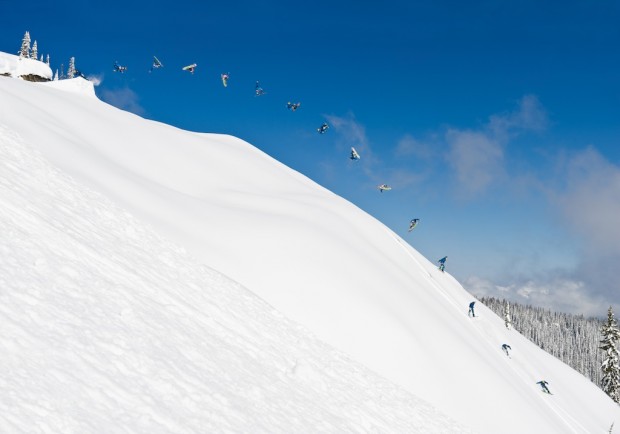
Supernatural Selection is Rice’s vision of snowboarding – it’s about bringing the snowboard community together, about bridging what he sees as a disconnection between the sport’s legends and the next wave of riders.
“I feel like there’s a huge gap between contest riders and the legends of the sport,” says Rice, “dudes like [Terje] Haakonsen, DCP, and Nico Müller – a lot of the time the younger riders and these legends don’t even bump into each other. And those legendary guys have a lot of amazing knowledge and information to hand down.”
“I’m not gonna say that snowboarding is headed down some destructive road and it needs to be saved, but I just want to add to the diversity and uniqueness of snowboarding. Snowboarding is a lot more than big air contests, even though I come from that background, and I still enjoy that element of snowboarding. But even all those young guys who are destroying the contest scene still want to go cat-boarding and go hit powder features and ride resorts. They’re putting in their time and making it happen and competitive snowboarding’s at an incredible place right now – I have a ton of faith in a lot of the young guys and there are some great people in the next generation who are going to drive the scene.
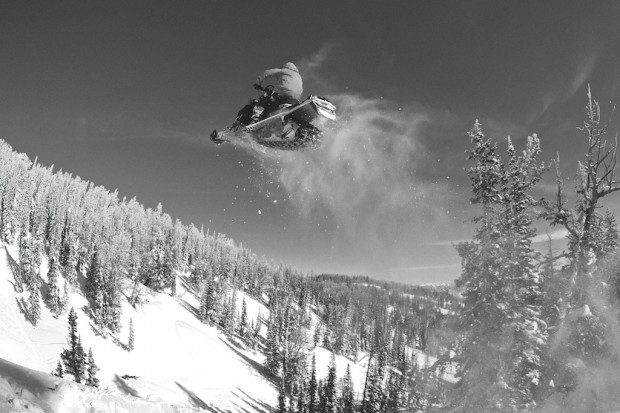
“If anything, I’d just like to see riders become empowered to really make the calls. I think one of the biggest things that I see is lack of initiative – some guys don’t realize the power that they actually possess to do things that they would like to do, and get sponsors to rally around them and work on projects.”
With Rice as an example, young riders should become aware of their ability to make a difference – to drive snowboarding in a direction that fits their vision of snowboard culture, rather than a vision forced upon then by sponsors and mass media marketing budgets. There’s no doubt Rice is an intensely focused athlete – he has to be – but he is also a quirky, intelligent person, moving through life with a perspective grounded in more than just his snowboard boots. He understands the industry, and is well aware of the implications of his place in the spotlight. And much like Terje before him, he’s not afraid to speak his mind.
With Travis Rice at the helm, the world of snowboarding couldn’t be in better hands.
